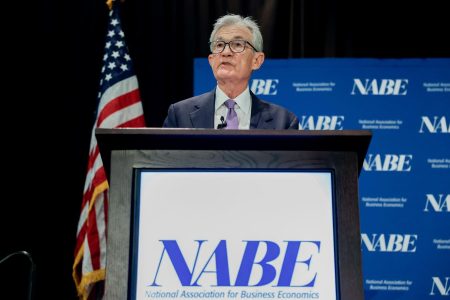Exchange-traded funds (ETFs) offer tons of advantages for beginning investors (and intermediate and advanced ones, too). ETFs can provide attractive returns, and investors don’t need extensive knowledge to find funds that are poised to deliver attractive returns for decades. But which ETFs should beginning investors consider buying, and how should they use ETFs to build wealth?
The best ETF strategies include not only what to buy but also how to buy your funds, including specific things you need to do to keep your wealth growing over time.
1. Buy a broad-based ETF
Investors are always on the hunt for a good investment, and the ETF world offers plenty of choices. One of the best types of funds includes hundreds of stocks from across all major economic sectors: an S&P 500 index fund. This fund owns all the stocks in the Standard & Poor’s 500 stock index, which includes about 500 of the largest, most profitable American companies.
With such a wide and diversified collection of stocks, an S&P 500 index fund is a bet on the economic prosperity of America. It’s also the top recommendation of legendary investor Warren Buffett. This kind of fund has delivered about 10 percent annual returns on average over long periods of time, and it’s available to anyone — including beginning investors.
Here are the best S&P 500 index ETFs, including their returns and costs. You can purchase them at any of the best brokers for beginners.
2. Dial down volatility with a dividend ETF
Another great investment choice for new investors is a dividend ETF, which offers a regular cash payout that can grow over time. A dividend fund offers the potential for strong returns but is typically less volatile than an S&P 500 index fund, so the former’s price will not fluctuate as much as the well-known stock index likely will.
The combination of the dividend and potential strong returns over time make dividend ETFs an attractive investment. The best dividend ETFs charge a low expense ratio — the fee charged by the fund company for managing the fund — often less than $10 a year for every $10,000 invested.
3. Buy to hold — don’t trade actively
The vast majority of ETF assets are managed passively — that is, they’re designed to track a specific index, such as the S&P 500 index. So ETFs help investors earn the returns generated by their underlying index. But you won’t earn the index’s return if you trade in and out of the ETF, a process that will likely generate capital gains taxes and result in ultimately underperforming the index.
Research has shown that passive investors outperform active investors, so ETF investors should stick to buying and holding their funds if they want to earn their long-term returns.
4. Add money to your ETFs over time to grow wealth
Investing is about building wealth over time, and you’ll want to regularly add money to your ETFs to keep your wealth compounding. The best approach is to determine how much you can contribute on a weekly or monthly basis, and then add that consistently, regardless of what’s going on in the market or economy. This process is called dollar-cost averaging, and it helps reduce your risk by spreading out your purchase prices, ensuring you’re not buying at a too-high price.
If you have a 401(k), you’re already taking advantage of this process, adding to your account on a biweekly basis. But you can also use it in your IRA or taxable account and get great results.
5. Diversify your ETFs by market cap
The S&P 500 stock index includes primarily large-cap and mega-cap stocks — the market’s largest companies. Because these are the largest companies, the S&P 500 covers about 80 percent of the total value of the stock market. But some investors will want to also invest in the remaining 20 percent of the market, so they’ll buy small-cap ETFs and mid-cap ETFs. These funds represent the smaller and medium-sized companies trading on major stock exchanges.
The best small-cap ETFs and best mid-cap ETFs can also deliver attractive returns. By adding these funds to a portfolio along with an S&P 500 ETF, investors achieve more diversification, which can help reduce risk and may lower the investment portfolio’s volatility.
6. Buy an index ETF and a few stocks
Do you like investing and want to add a few individual stocks to your portfolio? Great. If you’re learning how to invest, you can still keep most of your money invested in a broad-based index fund such as an S&P 500 ETF and then add on a few stocks. There’s a good chance the S&P 500 ETF already owns them, but if you want some extra exposure to them, that’s fine.
The idea here is to keep the size of your individual stock positions to no more than a few percent of your total portfolio each. So when you buy each stock, it might take up 2 or 3 percent of your portfolio, and three stocks might take up 6 to 9 percent of your whole portfolio. The remaining 91-94 percent of your total investments would consist of your index fund(s).
7. Add on a sector ETF to a diversified portfolio
A sector ETF is similar to a broad-based ETF, but it consists only of stocks in a specific industry, such as industrial stocks, consumer staples or information technology stocks. While a sector ETF is less diversified than a broad index fund, it may do better if the sector is hot. So it can be an attractive way to invest in the sector without having to know all the individual companies.
The downside to a sector ETF is that if something hits the sector, it can hurt all the companies in it. For example, imagine that oil prices skyrocketed, negatively impacting shares of all the major airlines. The narrow diversification of a sector ETF protects against problems at a single company, not against the industry as a whole, whereas an S&P 500 fund offers broader diversification and protection.
Some of the top sector ETFs include health care funds, consumer staples funds and technology funds.
What is an exchange-traded fund (ETF)?
ETFs are a kind of fund that owns various types of securities but usually just one type, either stocks or bonds. A share of the fund provides ownership of all its stocks or bonds. For instance, if an ETF held 150 stocks, then owners of the fund would have a small stake in each of them.
ETFs are usually passively managed, meaning that the fund simply owns whatever is held in a target index that it tracks, such as the S&P 500 or Nasdaq 100. It doesn’t actively trade stocks or bonds, unlike mutual funds, which have professional investors to research and buy investments.
Because they simply passively track a preset index, most ETFs are considered index funds.
ETFs trade on a stock exchange, allowing anyone to purchase them, and you can buy and sell them during the day, unlike mutual funds, which trade only after the market closes for the day. Because of this setup, you’ll know the price of the ETF right when you transact.
ETFs charge an expense ratio, which is expressed as a percentage of your investment in the fund. Because they’re passively managed and therefore don’t need expensive analysts to research investments, ETF fees tend to be low, and ETFs are typically cheaper than mutual funds.
Bottom line
ETFs offer a great deal for beginning investors, but picking a good fund is only the start of your wealth-building journey. You’ll want to add to your investments over time, as well as hold on to your funds so that you minimize the effects of capital gains taxes on your ability to compound your wealth.
Editorial Disclaimer: All investors are advised to conduct their own independent research into investment strategies before making an investment decision. In addition, investors are advised that past investment product performance is no guarantee of future price appreciation.
Why we ask for feedback
Your feedback helps us improve our content and services. It takes less than a minute to
complete.
Your responses are anonymous and will only be used for improving our website.
Help us improve our content
Read the full article here









